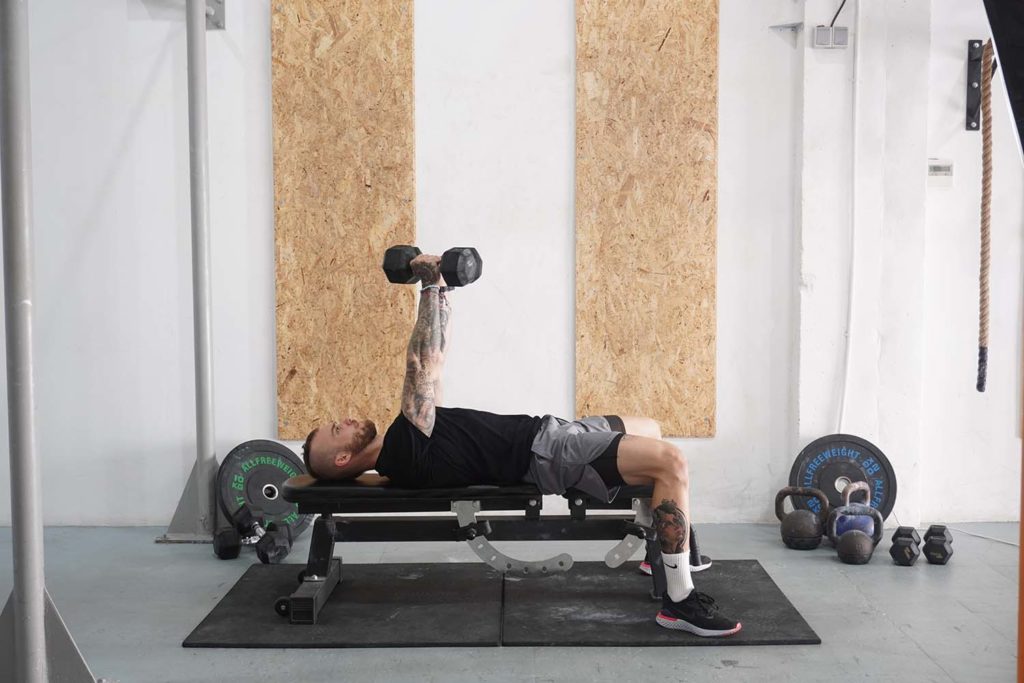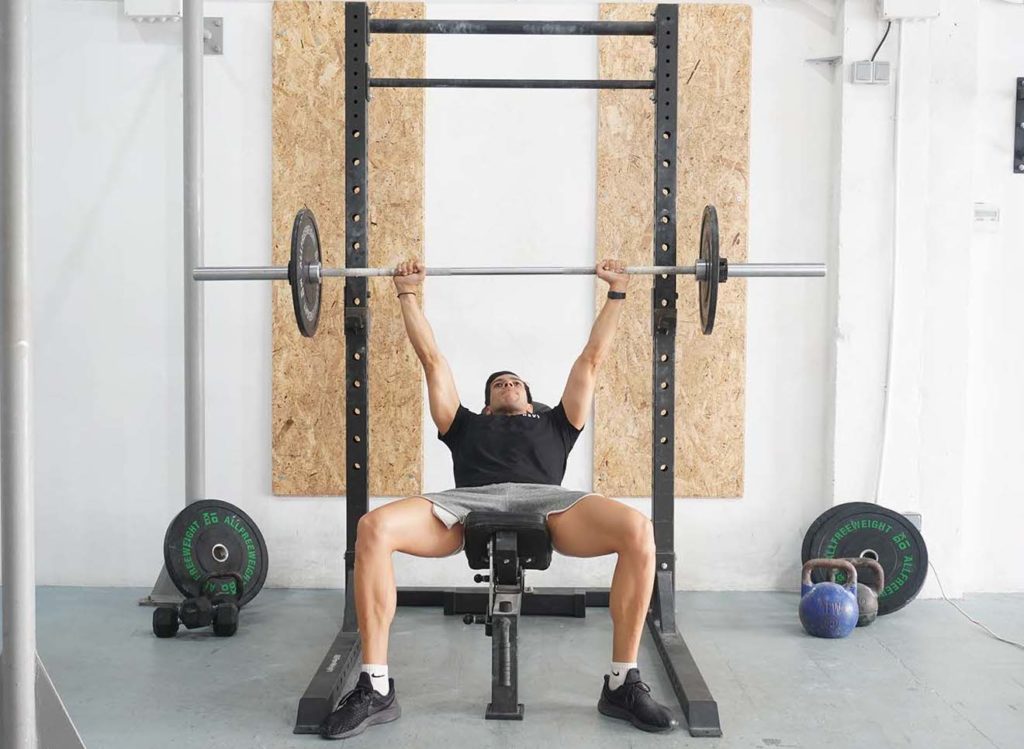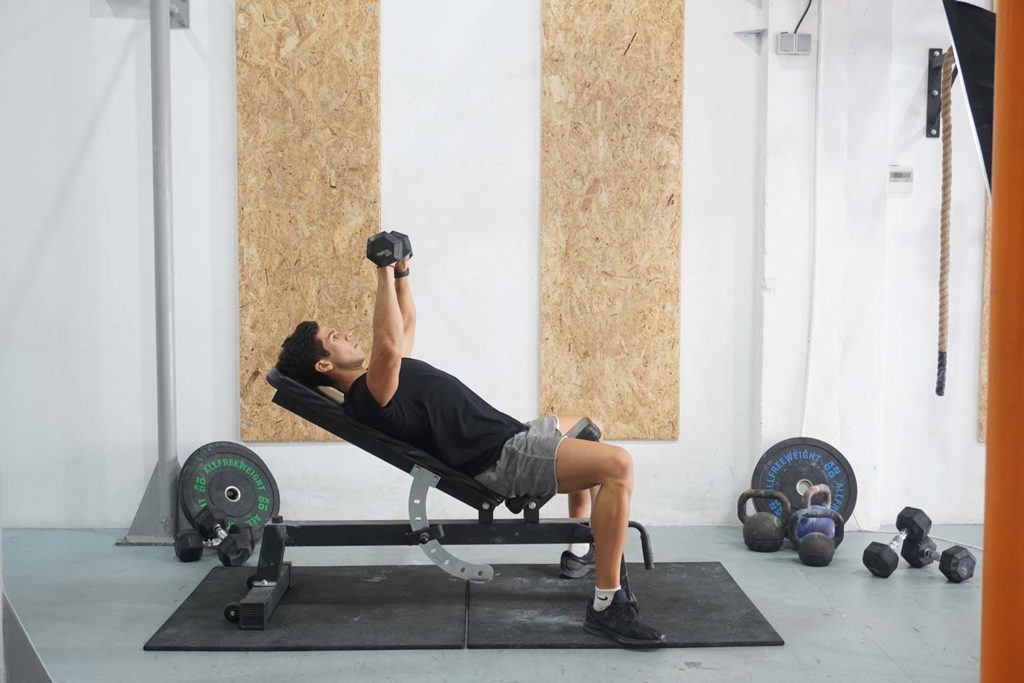Why the Barbell Bench Press is Beneficial to Building Strength and Size
The barbell bench press is arguably one of the most popular and widely used gym movements. Most trainees perform the exercise to strengthen their pectorals, but bench pressing is also great for the triceps, shoulders, and core. As a result, the bench press develops your pushing strength, making you more athletic and better able to handle everyday tasks that involve these muscles.
We recommend including the bench press early in your workouts, preferably first or second. The exercise is highly technical, and it’s best to perform it while you’re at your strongest. As far as load goes, start with an empty barbell to get a feel for the movement before adding weight plates. Aim for a light enough load that allows you to do at least ten repetitions with proper technique and a full range of motion.
You can perform the bench press once a week for general fitness or bump the frequency to two, even three, weekly sessions for maximum strength development.
How to do a Barbell Bench Press
- Lie on the bench and make sure to have the four points of contact: your feet, butt, upper back, and head.
- Extend your arms up and grab the bar with a grip slightly outside shoulder-width level. Most barbells have lines that can help you find a good starting point.
- Once you’ve grasped the bar, bring your shoulder blades back and dig them into the bench. Simultaneously arch your lower back and ensure that your butt is in solid contact with the bench. Finally, plant your feet flat against the floor.
- Take a deep breath, unrack the bar, and bring it over your chest.
- As you keep your shoulders retracted, inhale again, begin to bend your elbows, and lower the bar toward your nipple line.
- Touch your chest with the bar, hold for a moment, and press up until your elbows are almost entirely locked out. Exhale.
- Keep repeating the motion.
What muscles does bench press with a barbell activate?
The primary muscles that work during a bench press are the pectorals (chest) (1). Our pectorals cover the front upper portion of the torso and attach to the humerus (upper arm bone) (2). The pectorals play an essential role in numerous arm motions, help us control the barbell on the way down, and produce force to press it up.
Our triceps is the second muscle group that plays a vital role during a bench press (1). The triceps cover the rear of our upper arms and produce elbow extension, which occurs as we press the barbell (3). Tricep strength becomes more important the closer we get to the top of each repetition.
Our deltoids (shoulders) also contribute during a bench press (1). The muscle group offers stability at the shoulder joint, and the anterior deltoid head assists the chest and triceps with pressing the barbell.
The midsection musculature provides stability as we press. Similarly, the upper back muscles keep our shoulders retracted, allowing us to stay safe and stable during the exercise.
Barbell Bench Press Vs. Dumbbell Bench press
The dumbbell bench press is a popular alternative to barbell pressing, and many trainees use the two movements interchangeably. At first glance, both exercises offer the same benefits: similar range of motion, good overloading potential, training the same muscles, and more. But, upon closer inspection, the two movements are also unique.
Using a barbell allows you to lift more weight and possibly overload your muscles more effectively. Making progress is also more predictable, and trainees find it easier to add weight to the bar.

The dumbbell press forces you to use lighter weights and progressing the load happens more slowly. Plus, it tends to be more challenging to set yourself up for a set of dumbbell presses, especially as you start using heavier weights.
Still, pressing dumbbells offers some unique benefits. For one, you can use a slightly longer range of motion because the dumbbells can travel down to either side of your torso, leading to a somewhat better stretch. Second, dumbbells force both sides of your body to work independently, which is a great way to detect and fix side-to-side muscle imbalances. Third, dumbbells might lead to slightly better chest activation at the top because, aside from pressing up, you also bring your hands together through arm adduction.
Variations and Modifications of the Barbell Bench Press
1. Pause Bench Press (Barbell)
Pause bench pressing is an effective variation you can include in your training to improve your strength off the bottom. The objective is to lower the barbell to your chest, hold it there for one to three seconds, and press it to complete the repetition.
2. Close-Grip Bench Press
The close-grip bench press is a variation where you place your hands shoulder-width apart on the barbell. Doing so increases the range of motion slightly and puts your chest muscles at a mechanical disadvantage (4). As a result, your triceps have to work extra hard.
3. Incline Bench Press (Barbell)

The incline bench press is similar to the classic exercise but with one difference. Instead of having the bench horizontal, you place it at an incline of 30 to 45 degrees. Doing so allows you to emphasize your upper chest (clavicular head) (5).
Mistakes to Avoid
One of the most common mistakes with the bench press is using too much weight. Aside from increasing the risk of dropping a heavy barbell on your chest, doing so makes the exercise less effective. You end up shortening the range of motion and reducing muscle activation. Some trainees include a minor ‘bounce’ from the bottom to push the barbell with more force, but that can be painful and dangerous.
The second mistake with the bench press is flaring your elbows to your sides. Doing so places your shoulders in a weaker and more compromised position, making the bench press dangerous. Avoid the mistake by keeping your elbows somewhat tucked in.
The third mistake with the bench press is not retracting your shoulder blades and keeping your back flat against the bench. Similar to the previous error, doing so places your shoulders in a compromised position, increasing the risk of impingement. Instead, you should bring your shoulders back as much as possible and chest out.
Similar Exercises to the Barbell Bench Press
Incline Bench Press (Dumbbell)

Incline dumbbell bench pressing is an effective accessory exercise that emphasizes your upper chest (the clavicular head) (5). The movement works great in combination with the barbell bench press because the movements lead to more balanced chest development.
Chest Dip
Chest dips are an effective bodyweight exercise that strengthens your chest, shoulders, triceps, serratus anterior, and midsection. The movement emphasizes your lower chest and causes significant mechanical tension for muscle growth.


1 thought on “Bench Press (Barbell) – How to Instructions, Proper Exercise Form and Tips”
Great tips shared on this article. I have personally seen so many people in the gym getting hurt during bench press just because of ego. Thanks and keep posting